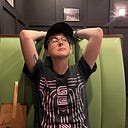Member-only story
We’re Still Not Seeing Pauli Murray
A new documentary about the Black feminist icon shows us how trans people are erased from movements they built.

There’s a moment late in My Name is Pauli Murray, Julie Cohen and Betsy West’s documentary about the life of the civil rights icon, that made me gasp. It’s the moment when we first see Murray, who abandoned a successful career as a law professor to take an Episcopal priesthood, walking down the aisle of a church in their cassock.
Church was the battleground where Murray’s emerging transgender identity was first hashed out. Their primary guardian, their aunt Pauline, affectionately called Murray “my boygirl” and affirmed them in ways that are still rare for trans kids in 2021. Aunt Pauline also wouldn’t bring a boygirl to church. It was the first hard limit in a life full of them: Pauli Murray wore boys’ clothes every other day of the week, but when they went to church, it was in a dress.
A cassock is not just a male outfit. It might be the single most male outfit you can wear in a church setting. Pauli Murray had a genius for hiding in plain sight and getting inside institutions built to exclude them, and this, perhaps, is an apt way to begin a discussion of Murray’s relationship to another ancient and problematic institution: Mainstream feminism.
Tradition demands that I use this space to sum up Pauli Murray’s most important accomplishments in a brief paragraph. The problem is that Murray had so many accomplishments, all of them so important, that they’re impossible to sum up.
One of their student papers, arguing that segregation violated the Thirteenth and Fourteenth amendments, provided the legal strategy that Thurgood Marshall used to overturn Plessy v. Ferguson. Ruth Bader Ginsburg listed Murray as a co-author on her Supreme Court brief in Reed v. Reed, which established sex-based discrimination as unconstitutional. Their work provided the basis Chase Strangio used to win Bostock v. Clayton County, which bans LGBTQ+ discrimination. They were on the two-person team that first convinced the ACLU to include “women’s rights” under the label of “civil rights.” Their concept of “Jane Crow” — the unique discrimination faced by black women on the basis of both race and gender —…
